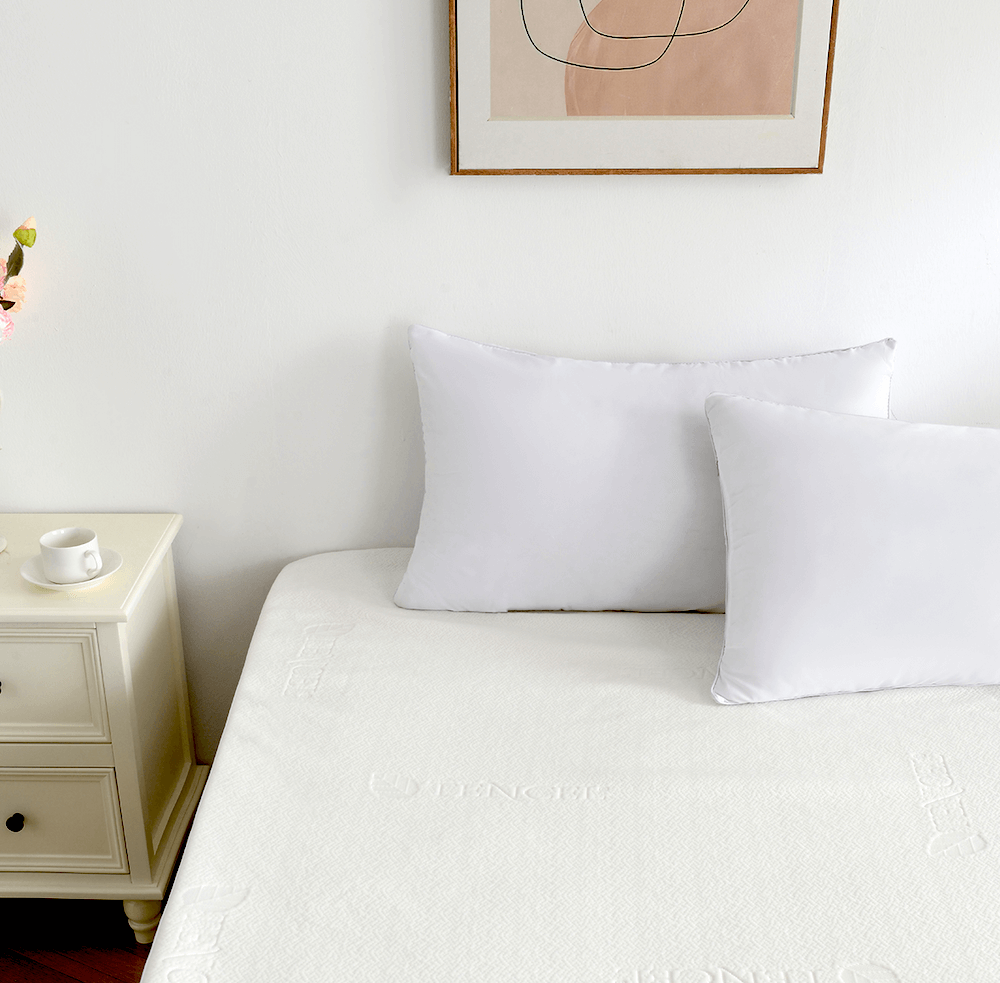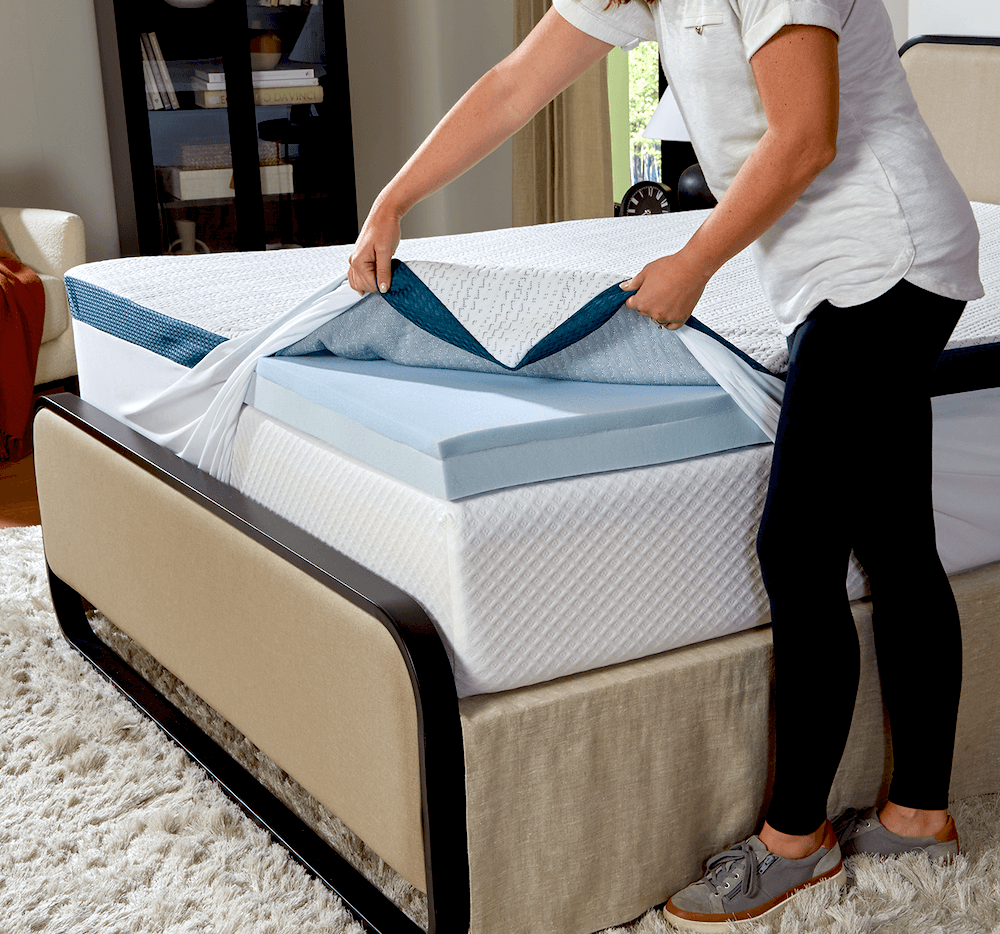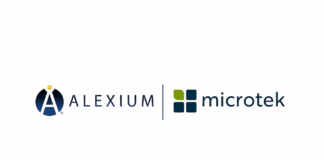Estimated reading time: 6 minutes
Offering a robust lineup of protectors, sheets and toppers boosts sales — and helps your customers get the most out of their new mattress. Part one of a two part series.
Even the most casual readers of Sleep Savvy know the team here believes savvy bedding retailers should invest time, energy and floor space to the protectors, sheets and toppers that help create a full bedding ensemble.

It serves your customers in two important ways. First, it keeps them from having to buy necessary items elsewhere. Second, it allows you to help them build a sleep ensemble that enhances the specific features of their new mattress. And, of course, there’s a bonus for you, too: It adds dollars to tickets — especially important during the market downturn of the past few years.
“Today’s customer is looking for solutions for the total sleep experience and the technology of today’s accessories can certainly add to that — you are doing more than just dumping a set of sheets into the ‘shopping cart.’ By positioning yourself as a trusted sleep adviser, you are more likely to see that customer repeat with you or recommend you to friends and family,” says Chris Bradley, vice president of consumer products at Richmond, Virginia-based foam bedding specialist Carpenter Co.
We talked to producers of sleep accessories about the best ways to approach selling sleep accessories.
Integrate Accessories Early: Starting the Conversation with Customers
The conversation about sleep accessories needs to start early, says Eugene Alletto, founder and CEO of Farmingdale, New York-based mattress and accessories producer Bedgear. “Accessories should never be the last stop after a mattress sale — they should be part of the discovery process,” he says. “My advice: Start asking questions early, like ‘How do you usually sleep? Hot, cold or somewhere in between?’ … These open the door to personalized recommendations. Accessories are not add-ons. They’re integral to creating the right sleep system. When RSAs treat them that way, the sale feels natural, not forced.” Find more tips below.
Educate Your RSAs: Training on Accessory Features and Benefits
Don’t let your retail sales associates wing it when talking about sleep accessories. “Retailers that have well-educated RSAs seem to do the best (selling sleep accessories),” Bradley says. “Today’s accessory is not just a pillow or a pad, it has features and benefits. Those able to communicate those features and benefits are the ones most likely to be successful.” Make sure to include regular training on protectors, sheets and toppers, just as you do for mattresses. “Be educated about all of your products,” Bradley adds. “And be able to answer: ‘Why is this (product) more expensive than all of the others?’ ”
Match Mattress Features with Compatible Accessories
When it comes to sheets, “some customers prefer silky and refreshing, others natural and cozy, but either way, the right sheet should enhance the feel of the mattress. For example, a mattress with cooling technology is enhanced by a breathable, cool-touch sheet set,” says Sarah Bergman, chief marketing officer and senior vice president of product development for Phoenix-based sleep accessories specialist Purecare. The same goes with protectors. Remember, helping to properly pair accessories with mattresses is a service shoppers can’t get when buying items later at another retailer, so promote your expertise and the hassle-free nature of purchasing accessories right along with the new mattress.
Use Sensory Demos to Drive Accessory Sales
“Customers don’t just want to see a product; they want to feel it, touch it and experience the texture, breathability and quality — just as they do with a mattress,” says Kristin Sugar of Sandy, Utah-based Cariloha, a maker of sustainable sleep accessories. Sugar, senior vice president of wholesale sales for Cariloha, also suggests RSAs actively put shoppers in direct contact with a sheet or pillowcase to entice them through what the company calls a “Between the Sheets” demonstration. She explains the demo of Cariloha’s sheets made of bamboo viscose this way: “Drape a pillowcase or sheet sample over their arms or legs. Let them experience the softness, breathability and cooling touch. Say: ‘This is what your skin will feel every night. Plus, it naturally repels odors and allergens.’”
Position Protectors as Investment Protection
When it comes to discussing mattress and pillow protectors, focus on the practical value of the products, says Derek Leishman, national sales director for Mlily USA, a mattress and sleep accessories producer with headquarters in Knoxville, Tennessee.“The key is to position a protector as protecting the customer’s investment. A mattress is a major purchase for any home, and protectors serve as the first line of defense against moisture, spills and allergens,” Leishman says. “Since the average person can produce up to 32 ounces of sweat per night, a protector helps maintain the comfort, support and hygiene of the mattress for years to come.”
Suggest Mattress Toppers as an Affordable Comfort Upgrade
RSAs can mention toppers if customers seem hesitant about purchasing a new mattress or express that their current bed is in OK condition but not as comfortable as in the past, says Kyle Borreggine, vice president of specialty sales for Princeton, New Jersey-based licensing group Therapedic International. Tell them: “If your mattress still has life left in it, a high-quality topper can change the way it feels, adding more comfort (and) more support and making for a healthier night’s sleep,’ ” Borreggine says. He suggests emphasizing that “a quality mattress topper will add an instant comfort upgrade to your mattress, at an affordable price.” Pro tip: Have customers test one mattress with a topper and then without, helping them feel differences.
Merchandising Strategies to Showcase Sleep Accessories

Merchandising is important, too. Here are some suggestions for highlighting sleep accessories in a way that shows shoppers their value.
Strategically Place Accessories on Floor Models and Displays
Borreggine encourages retailers to place toppers not just on shelves or racks but also on some floor models and to display them in more than one place in the store so they can’t be missed. Same goes for protectors and sheets. Doing so makes it easy for RSAs to bring up the subject of accessories and prompts shopper interest.
Communicate Value with Good-Better-Best Step-Up Displays
“Show the step-up story,” Leishman says. “Use side-by-side displays or packaging that clearly communicates the good-better-best progression. This makes it easier for both associates and customers to understand the value of upgrading.”
Encourage Interaction: Make Products Easy to Touch and Visualize
“To merchandise sleep accessories effectively in-store, make the products easy to access and interact with. Display all available colors so customers can visualize how each option looks and fits their sleep space,” Sugar says. Because products like sheets will be close to the skin, encourage lots of touching.
By talking about and displaying sleep accessories in the best way, you’ll provide a valuable service for your customers and strengthen your bottom line.







